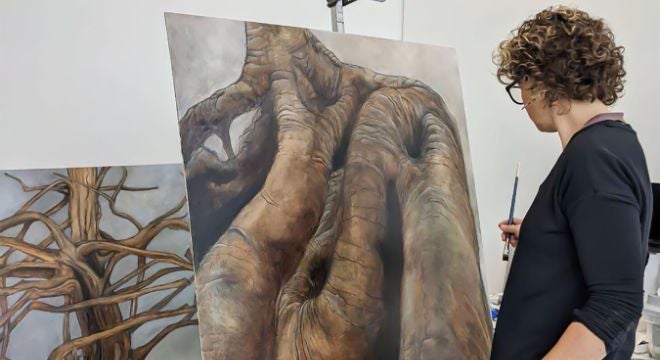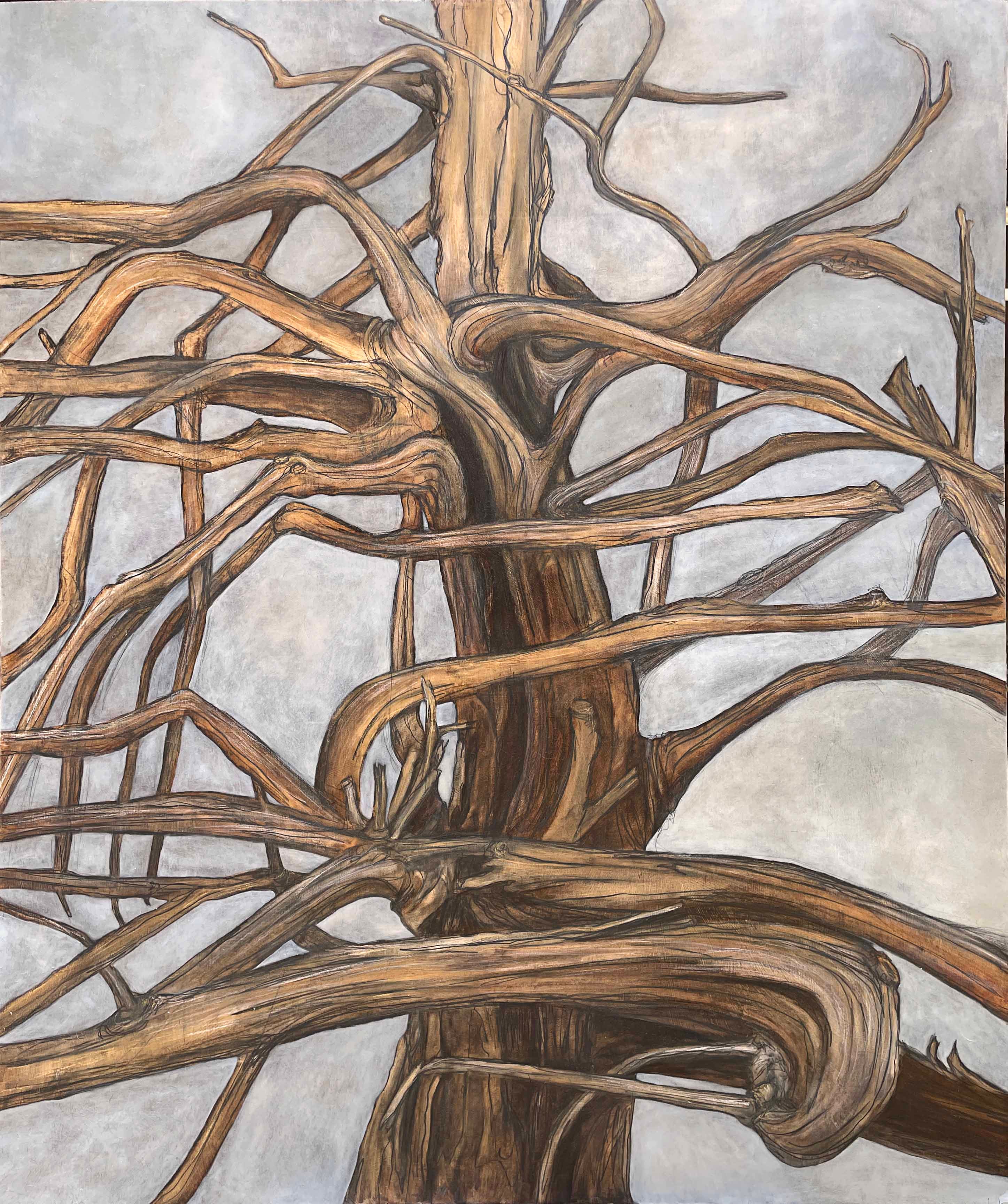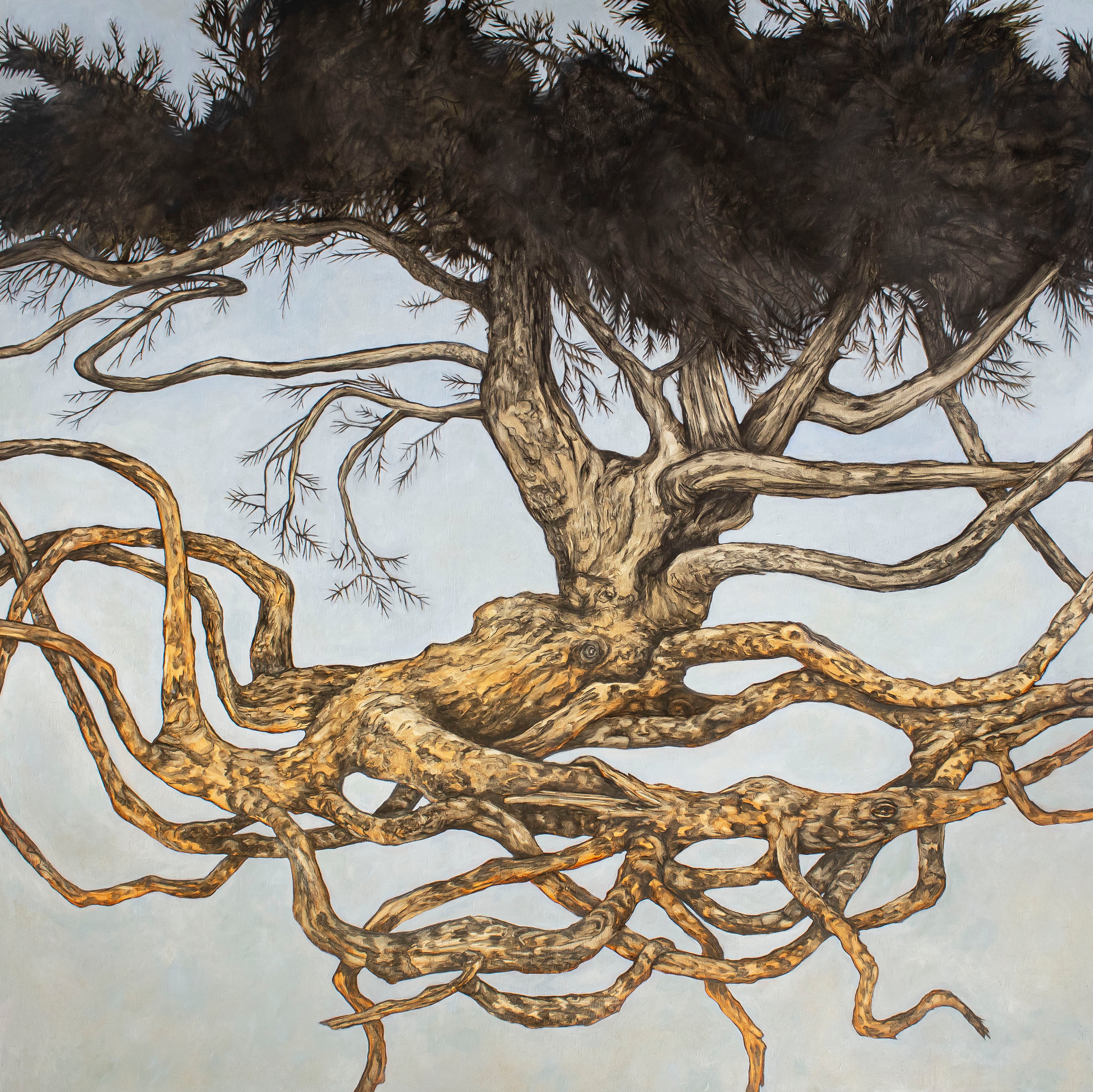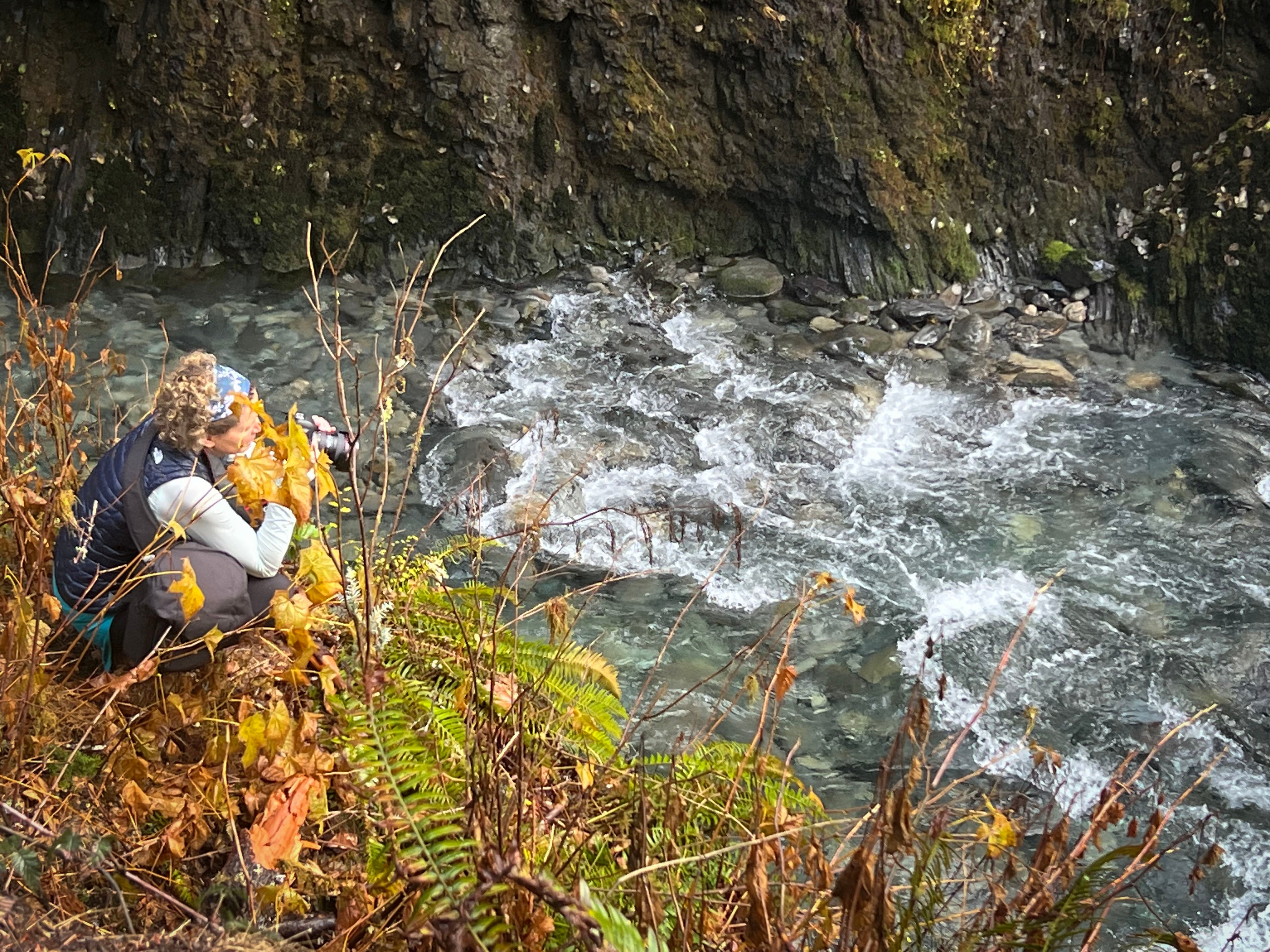
Growth in Liminal Space: Solo Exhibition by Jenn Clemons
Growth in Liminal Space: Solo Exhibition by Jenn Clemons
Jenn Clemons, College Counselor, Visual Arts Department Chair, and US Art/International Residence Director, was asked to do a solo exhibition at the Charles H. Taylor Visual Arts Center for the Artists Who Teach 2023 Exhibition. Her exhibit, Growth in Liminal Space, was about observing how trees grow in such limited spaces and how they are affected and molded by the elements that surround them. The lives of these giant trees Jenn observed while walking the Olympic coastline had her questioning the future of the century-old giants and wondering what will be of them in another 100 years.
To dive further into the meaning of her exhibit, Jenn was asked a few questions to explain the process and meaning of her solo exhibit.
How did you come up with the concept for your exhibition?
- When I was given the opportunity to have a solo show I knew I wanted to work on a series depicting old growth trees that were connected by place to capture the scale and vastness of the Pacific Northwest wilderness. To prepare for this show, I visited the Olympic Peninsula in the state of Washington over Thanksgiving break. I hiked along the coastline and through the Hoh Rainforest.
Where did the name “Growth in Liminal Space” come from?
- Leading up to this trip I began investigating where I wanted to hike and the trees I wanted to find. I discovered that some of the trees I was hoping to photograph were no longer standing and the futures of others were precarious. These trees, in many cases hundreds or even thousands of years old, are living in limbo. The environment of our planet is on the threshold of no longer being capable of sustaining these giants. The strength and vulnerability of these trees mirrors that of the human experience, and the ethic that guides how we treat the planet reflects how we treat each other.
 Based on your explanation of your solo exhibition, do you always view life in such a profound, deep, and artistic way?
Based on your explanation of your solo exhibition, do you always view life in such a profound, deep, and artistic way?
- Why I paint trees and their significance was not immediately obvious to me, I had to scratch below the surface. I have always been drawn to photographing trees. I was curious to learn more about trees and began reading books including Lab Girl by Hope Jahren, Finding the Mother Tree by Suzanne Simard and Wild Trees by Richard Preston. I was intrigued about the interconnected networks of the forest. As I began to work from trees, I saw torsos, limbs and faces emerging and initially steered not wanting to anthropomorphize the trees. After more thought, however, I turned back to these forms that appear to come alive. I want the viewer to relate to the trees as something that is alive. My pieces are large, a relatable scale to us. The elements of the landscape are stripped away in my work revealing the bare figure of the tree, its curving and bending limbs and branches that fill the page.
Besides trees, where else in the natural world do you draw inspiration from?
- My work has always reflected interconnected forms in nature. Right now I am focused on trees, I have come to see them as symbolic of the health of our planet. I plan to continue to investigate these forms until the work leads me to something new.

What does this project mean to you and how does it differ from anything you have done in the past?
-
This project reflects the first time I have created a body of work that was inspired by trees that were all from one geographical place.
I have explored the coast of the Olympic Peninsula through the lens of the health and history of the trees that grow there. I have learned that within the rings of these trees the history of the coastline is recorded dating back hundreds, and in some cases thousands, of years. Several record breaking conifers can be found in the Pacific Northwest. The unique ecosystem of temperate climate, rainfall and snowmelt sustains these rainforests. The current climate-change crisis we are facing threatens this fragile ecosystem and its ability to sustain these trees.
This work has given me the opportunity to engage with an audience in conversations about wild places and our shared fascination with and connection to trees.
Will these quiet giants still be planted where they are or will the remnants be all that remain? According to Jenn, their current existence seems to be suspended in liminal space
